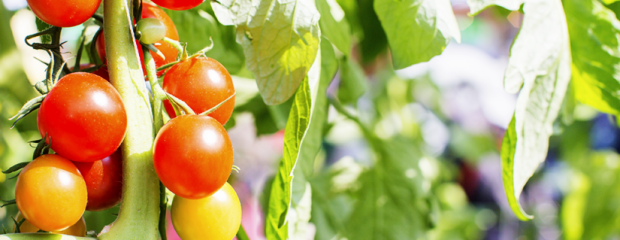There may be many benefits to growing your own garden, including better quality of produce, saving money, and having a healthy hobby. If you’re just getting started, use the guide below.
Here are our tips for growing fruits and vegetables at home!
● Gather your tools: Before you get down in the dirt, gather your gear. If you aren’t properly equipped already, head to your local home improvement or gardening supply stores to stock up on the essentials. To get started, you will need: a trowel (weeding, digging small holes), gardening gloves, a watering can and/or hose, a wheelbarrow, a shovel (digging large holes), a rake, shears (pruning), and sun protection.
● Decide how your garden will grow: Once you’ve planned the spot for your garden, you’ll need to decide which type you will grow. The traditional route is an in-ground garden, which uses natural soil and should ideally receive at least six hours of natural, direct light. If you have poor soil, you can choose a container garden instead by using store-bought potting soil (just make sure the container you use has proper drainage and enough space for deep-rooted plants). If you’re looking for something between the two, consider a raised-bed garden or the square-foot gardening method to get better control over the soil.
● Prepare your soil: Set your garden up for success by using high-quality soil. It should be well-aerated, free of stones and sand, and rich in compost for plenty of nutrients. Test the pH as well to make sure that your soil is only slightly acidic (unless you’re growing something like blueberries which prefer acidic soil).
● Pick your plants: Deciding what fruits and vegetables to grow is entirely up to you (and your growing conditions, of course). Plants like tomatoes, squash, beans, eggplant, corn, and peppers all love lots of sunlight, while leafy vegetables, potatoes, carrots, and turnips can do with less (which means they can be planted in early spring or late summer). If you’re a beginner, consider starting with seedlings from your local nursery.
● Tend to your garden: After the seeds are in the soil, keep a close eye on them. You may want to add more compost to help control weeds or cool roots during the summer. Depending on the weather, you may need to supplement the rain with additional water. Be careful not to water too much, though (watch out for leaves and stems that start to lighten in color or turn yellow).
Impress your friends and family with great, fresh meals all season long.



Recent Comments